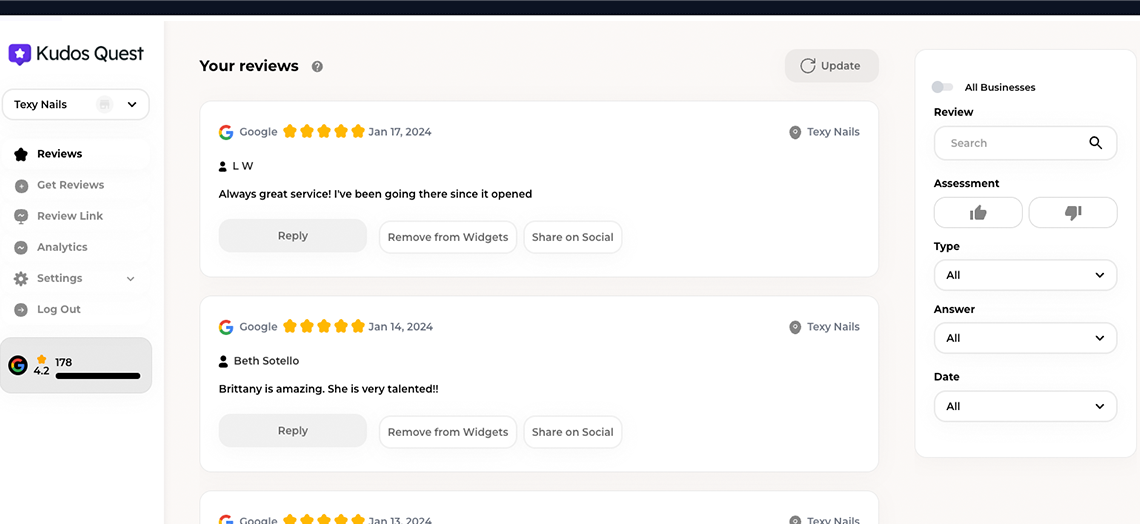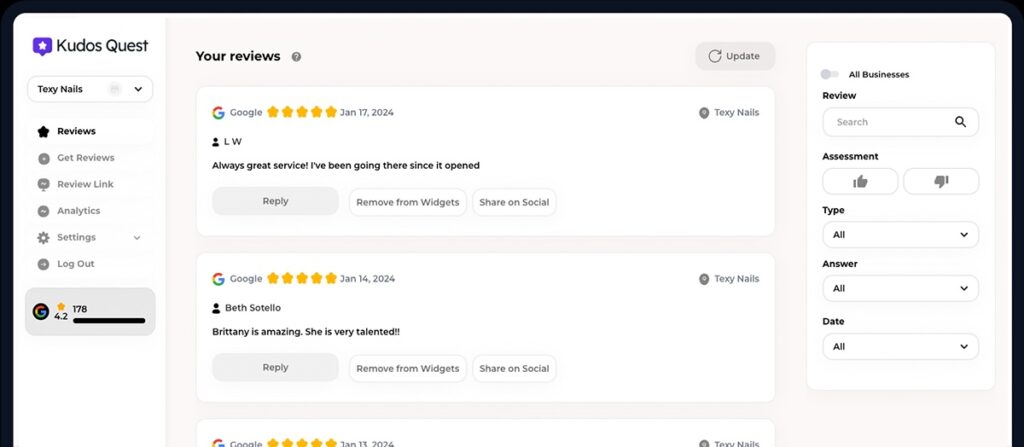The Ultimate Guide to Automotive Reputation Management
Maintaining a sterling reputation is crucial for businesses in the automotive industry. With online platforms playing an increasingly influential role in shaping consumer opinions and purchasing decisions, automotive reputation management has become paramount. In this comprehensive guide, we will explore the key components of automotive reputation management, strategies for effective implementation, the role of employees, and how to measure the success of your efforts.
Understanding Automotive Reputation Management
Before delving into the intricacies of automotive reputation management, it is essential to define what it entails. Reputation management refers to the proactive process of monitoring, influencing, and maintaining a positive perception of a business or brand. In the automotive industry specifically, this involves managing the online reputation of dealerships, service centers, and other automotive businesses.

Defining Automotive Reputation Management
Automotive reputation management encapsulates various strategies and techniques aimed at shaping public opinion about a business within the industry. It involves monitoring online reviews and ratings, managing social media presence, and ensuring exceptional customer service, among other aspects.
Importance of Reputation Management in the Automotive Industry
The automotive industry is highly competitive, with customers extensively researching and relying on online information when making purchasing decisions. A positive reputation is crucial for attracting and retaining customers, as well as differentiating your business from competitors. Effective reputation management can help build trust, enhance credibility, and ultimately drive sales and customer loyalty.
One important aspect of automotive reputation management is the monitoring of online reviews and ratings. With the rise of social media and review platforms, customers now have the power to share their experiences and opinions with a wide audience. This means that a single negative review can potentially reach thousands of potential customers. Therefore, it is vital for automotive businesses to actively monitor and respond to reviews, addressing any concerns or issues promptly and professionally.
In addition to managing online reviews, another crucial component of reputation management in the automotive industry is maintaining a strong social media presence. Social media platforms such as Facebook, Twitter, and Instagram provide a unique opportunity for businesses to engage with their customers on a more personal level. By regularly posting relevant and engaging content, responding to comments and messages, and showcasing the positive aspects of their business, automotive companies can effectively build a loyal and engaged online community.
Furthermore, exceptional customer service plays a significant role in reputation management for automotive businesses. Providing a seamless and enjoyable customer experience can lead to positive reviews, recommendations, and repeat business. This involves training staff to be knowledgeable, courteous, and attentive to customer needs, as well as promptly addressing any concerns or complaints that may arise.
In conclusion, automotive reputation management is a multifaceted process that involves monitoring online reviews, managing social media presence, and providing exceptional customer service. By actively shaping public opinion and maintaining a positive reputation, automotive businesses can attract and retain customers, differentiate themselves from competitors, and ultimately drive sales and customer loyalty.
Key Components of Automotive Reputation Management
Automotive reputation management comprises several key components that work together to maintain a positive brand image. In addition to the essential elements mentioned above, there are a few more factors that play a significant role in shaping a business’s reputation.
Online Reviews and Ratings
Online reviews and ratings have an enormous impact on a business’s reputation. Positive reviews can attract new customers, while negative ones can deter potential buyers. It is essential to actively monitor and respond to reviews to address concerns, showcase exceptional service, and demonstrate a commitment to customer satisfaction.
Social Media Presence
In today’s interconnected world, a strong social media presence is crucial for automotive businesses. Social media platforms serve as a powerful tool for engaging with customers, showcasing products and services, and building brand loyalty. Regularly posting relevant content, interacting with followers, and addressing customer inquiries can help cultivate a positive reputation.
Customer Service and Experience
Providing exceptional customer service is paramount for a positive reputation. Equipping your staff with the necessary skills and knowledge to deliver outstanding service can significantly impact customer satisfaction. Consistently exceeding customer expectations and fostering a culture of superior service can enhance your reputation and drive customer loyalty.
However, there are a few more aspects to consider when it comes to automotive reputation management. One crucial factor is the management of online listings and directories. Ensuring that your business information is accurate and up-to-date across various online platforms is essential. This includes directories such as Google My Business, Yelp, and other industry-specific platforms. Having consistent and accurate information not only helps potential customers find your business but also instills trust and credibility.
Another vital component of automotive reputation management is proactive brand monitoring. It involves actively monitoring online conversations, news articles, and social media mentions related to your brand. By staying informed about what people are saying about your business, you can quickly address any potential issues, respond to customer inquiries, and engage in positive conversations. This proactive approach demonstrates your commitment to transparency and customer satisfaction.
Furthermore, fostering positive relationships with industry influencers can significantly impact your reputation. Collaborating with influential individuals or organizations in the automotive industry can help you reach a wider audience and establish credibility. By partnering with influencers who align with your brand values, you can leverage their expertise and reach to enhance your reputation and attract new customers.
In conclusion, while online reviews, social media presence, and exceptional customer service are key components of automotive reputation management, it is crucial to consider other factors such as managing online listings, proactive brand monitoring, and building relationships with industry influencers. By implementing a comprehensive reputation management strategy that encompasses these elements, automotive businesses can cultivate a positive brand image, attract new customers, and foster long-term loyalty.
Strategies for Effective Automotive Reputation Management
To effectively manage your reputation, it is essential to employ proactive strategies that address both positive and negative feedback.
When it comes to reputation management in the automotive industry, taking a proactive approach is key. This means actively seeking feedback from customers and encouraging them to share their experiences. By doing so, you not only gain valuable insights into your business but also show your customers that you value their opinions.
One effective strategy is to request reviews from satisfied customers. This can be done through follow-up emails or by providing a convenient platform for them to leave their feedback. By encouraging positive reviews, you not only boost your reputation but also create a sense of loyalty among your customers.
Monitoring online platforms is another crucial aspect of proactive reputation management. Keeping an eye on review websites, social media platforms, and automotive forums allows you to stay informed about what people are saying about your business. This way, you can promptly address any negative feedback and prevent potential reputational damage.
Dealing with Negative Feedback
Negative feedback is inevitable, but how you handle it can make all the difference. When faced with negative reviews, it is important to respond in a timely, professional, and empathetic manner. Ignoring or dismissing negative feedback can further harm your reputation.
Addressing concerns raised by customers is the first step towards resolving any issues. By acknowledging their feedback and showing a genuine willingness to make things right, you demonstrate your commitment to customer satisfaction. Offering solutions and taking the necessary steps to rectify the situation can help salvage relationships and turn a negative experience into a positive one.
Remember, every interaction is an opportunity to showcase your dedication to customer service. By handling negative feedback with grace and empathy, you not only have a chance to retain the customer but also to impress potential customers who are observing how you handle such situations.
Leveraging Positive Reviews
Positive reviews are a powerful tool in building and maintaining your reputation. They serve as social proof, assuring potential customers that your business is trustworthy and reliable. To make the most of these valuable assets, it is crucial to leverage positive reviews across various platforms.
One effective way to showcase positive reviews is by featuring them prominently on your website. This can be done through a dedicated testimonials page or by strategically placing them on relevant product or service pages. By doing so, you create a sense of trust and credibility, enticing potential customers to choose your business.
Additionally, sharing positive customer experiences on social media platforms can significantly impact your reputation. Whether it’s through posts, stories, or videos, highlighting the positive feedback you receive can help attract new customers and foster a sense of community among your existing ones.
Lastly, don’t forget to incorporate positive reviews into your other promotional materials. Whether it’s in brochures, flyers, or advertisements, featuring snippets of glowing customer testimonials can be a persuasive tool in convincing potential customers to choose your automotive business.
Role of Employees in Automotive Reputation Management
Employees play a vital role in maintaining a positive reputation for automotive businesses. Investing in employee training and fostering a culture of advocacy can have a significant impact.

Employee Training for Reputation Management
Providing comprehensive training to employees on the importance of reputation management, customer service, and effective communication can equip them with the skills to positively represent your brand. Empowering employees to address customer concerns and proactively manage their own online presence can also contribute to a stronger reputation.
Encouraging Employee Advocacy
Encouraging employees to act as brand advocates can amplify your reputation efforts. By fostering a positive work environment, recognizing and rewarding outstanding employee contributions, and providing opportunities for professional growth, you can motivate employees to become ambassadors for your business.
Measuring the Success of Your Reputation Management Efforts
Measuring the effectiveness of your reputation management strategies is crucial for continuous improvement and refining your approach.

Key Performance Indicators for Reputation Management
Establishing key performance indicators (KPIs) allows you to track and measure the impact of your reputation management efforts. KPIs may include metrics such as the number of positive reviews, response times to negative feedback, and customer satisfaction ratings. Regularly analyzing these metrics can provide insights into areas for improvement.
Tools for Monitoring Automotive Reputation
A variety of tools and platforms exist to help monitor your automotive reputation. Online review management platforms, social media monitoring tools, and sentiment analysis software can assist in monitoring and evaluating online sentiment, identifying trends, and tracking competitors. These tools provide valuable data to inform your reputation management strategies.
As the automotive industry continues to evolve, prioritizing reputation management is critical. By understanding the key components, implementing effective strategies, empowering employees, and monitoring your reputation’s success, automotive businesses can establish and maintain a positive reputation that drives success.








